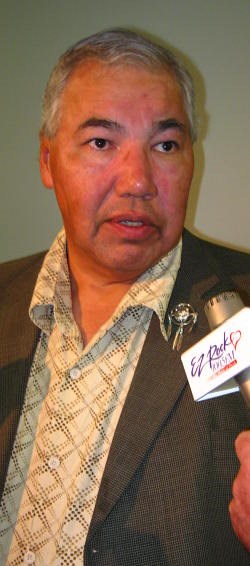Justice Murray Sinclair is impressed with the collection of photos, letters and records at Algoma University.
Sinclair, chair of the Indian Residential Schools Truth and Reconciliation Commission, was at the university yesterday to meet with and hear stories from residential school survivors.
After six short weeks on the job, Sinclair has come to a couple of conclusions.
He knows the commission has much catching up to do and records from residential schools are very important to a lot of people.
"One of our mandates as the Truth and Reconciliation Commission is to provide the complete history of the residential school community," he said. "That could be the whole mandate of this commission and it would still challenge the time and the resources that we've got."
Sinclair said that the collection that was 30 years in the making at Algoma University is one of the most complete and comprehensive he's seen.
Perhaps the largest in the country.
Collections like the one started by Dr. Don Jackson at the former Shingwauk Indian Residential School are important to former students and to their families, he said.
Residential school survivors, including the Children of Shingwauk, came together to pick up the task and add what they found over the years, Jackson told Sinclair.
"Grandchildren want to know where their grandparents went to school and what they did while they were there," he said. "They want to know everything from the marks their grandparents got - to sports teams they played on."
Learning more about the whole story of their history will give First Nation children more insight into who they are and where they came from.
"We need to show ourselves and the public we have a history to be proud of," Sinclair said. "It's not just about surviving. It's about flourishing."
Sinclair, along with Commissioner Marie Wilson, Commissioner Chief Wilton Littlechild and a 10-member committee, have five years and $60 million to fulfil the commission's mandates.
"The document [establishing the commission] has a very wide mandate and we've got a huge area to cover," he said. "While the amount of money dedicated to the commission is a significant amount of money, if you look at the amount of obligations we've been given, it will be a challenge to complete those obligations within the budget."
It's estimated that almost 100,000 aboriginal children attended residential schools across Canada.
Sincair's commission has been tasked with creating a complete and accurate record of those peoples' experiences, including a historical record on the policies and operations of residential schools.
It's also tasked with developing recommendations to the parties of the Indian Residential Schools Settlement Agreement.
The third area the commission is tasked with is the establishment of a national research centre to preserve and promote the legacy of Indian residential school survivors.
At Algoma University, Sinclair explored an extensive repository of photographs, records, letters and stories from survivors that's been collected over the past 30 years and is housed in a former Indian residential school.
He also spent time listening to the stories of survivors who gathered there to greet him and tour the grounds with him.
